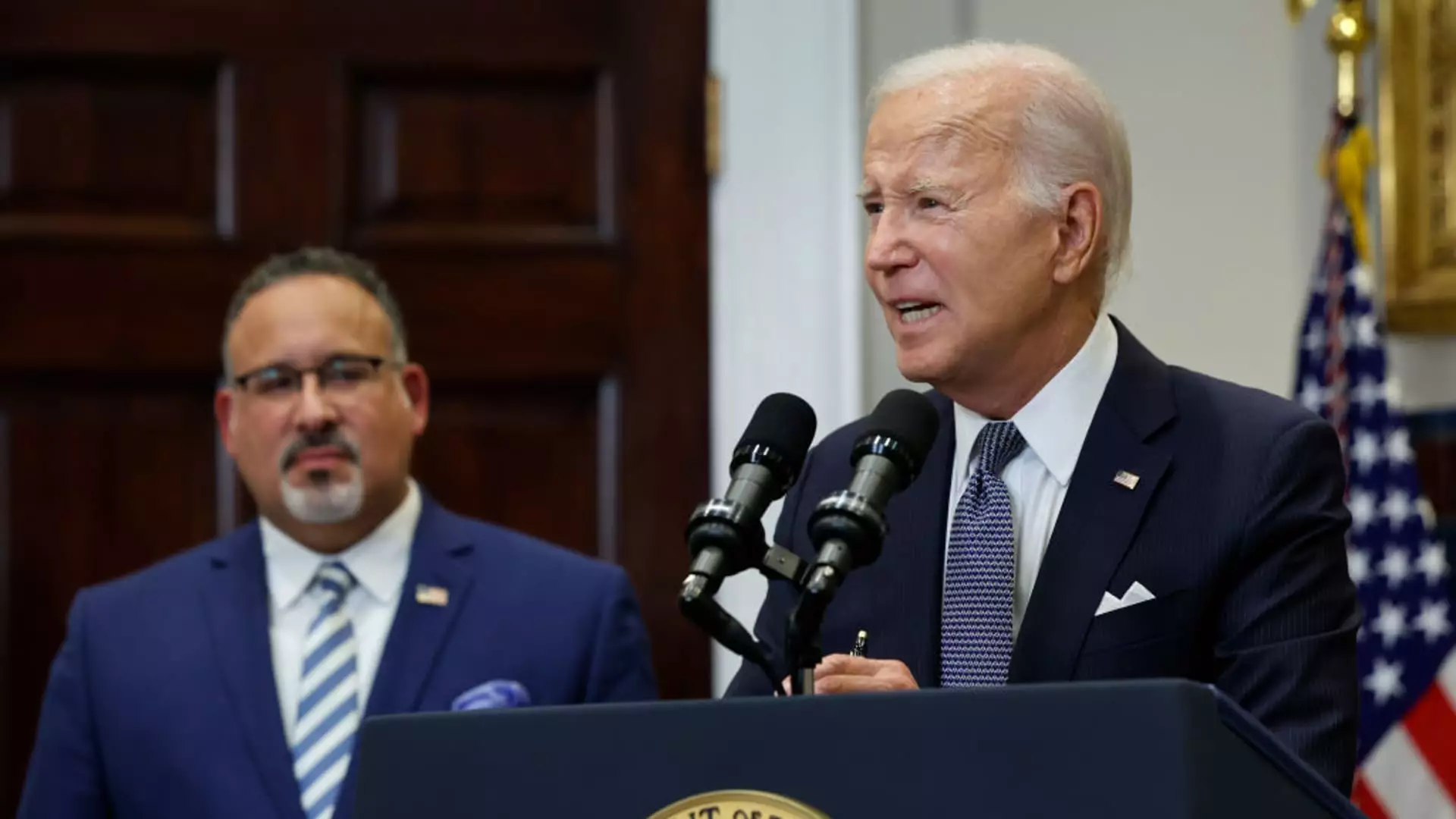The landscape of federal student loan collections is changing dramatically as millions of borrowers who previously enjoyed a reprieve from repayment are now facing potential sanctions. With the expiration of the COVID-19 payment pause, a significant number of individuals with defaulted federal student loans may soon encounter wage garnishments and other collection activities as early as this summer. The Department of Education has publicly addressed this shift, signaling a return to a more stringent system of accountability for borrowers.
As of 2022, the Department of Education reported that approximately 7.5 million federal student loan borrowers were in default. This alarming figure prompted comparisons to the 2008 mortgage crisis, highlighting the urgency of the issue. However, the situation has seen some improvement, with the number of borrowers in default dropping to around 5.5 million by late 2024. The recent policy wave from the Biden administration aims to offer guidance and support to those struggling with their student loans, particularly as the threat of collections looms closer.
The end of the COVID-19 payment hiatus in September 2023 set the stage for the resumption of collections. To aid borrowers in this difficult transition, the administration introduced a 12-month “on-ramp” to repayment. While this grace period provided some protection from severe consequences for missed payments, the expiration of this relief underscores the pressing need for borrowers to brace themselves for re-engagement in the repayment process.
In a memorandum released prior to a change in administration, U.S. Undersecretary of Education James Kvaal outlined strategies designed to assist borrowers as they navigate the resumption of loan collection activities. One of the key strategies includes easing enrollment in affordable repayment plans. Borrowers will have the ability to authorize the Education Department to directly obtain their income information from the IRS, streamlining the process for those who may be struggling financially.
A significant component of the new policy framework involves income-driven repayment (IDR) plans, which adjust monthly payments based on a borrower’s discretionary income and family size. Enrolling in these plans can provide substantial relief, with some borrowers potentially seeing their payments reduced to $0 monthly. Furthermore, remaining debt is eligible for cancellation after a specified period of consistent payments—usually between 20 to 25 years.
The memorandum also emphasizes the importance of proactively identifying borrowers who may qualify for loan forgiveness, ensuring they are screened for any available opportunities before slipping into default. This preemptive approach, integrating data from other federal agencies, presents a significant innovation in the management of federal student loans. As noted by education expert Mark Kantrowitz, this strategy could have far-reaching implications if implemented widely, assisting not only those on the brink of default but all federal student loan borrowers.
Moreover, the memo mentions the potential for increasing interest rate incentives designed to encourage automatic payments, thus securing timely repayments from borrowers. Currently, borrowers benefit from a modest reduction of 0.25 percentage points in their interest rate for opting into automatic payments. Future revisions could see this incentive increase, offering further motivation for borrowers to maintain their repayment schedules.
The reimposition of collection activities raises important questions regarding the protection of vulnerable populations. The Biden administration has aimed to ameliorate the financial impact on borrowers by eliminating most collection fees and enhancing the protections around Social Security benefits. For the first time, as of early 2024, individuals receiving monthly Social Security benefits below $1,883 can shield those funds from being offset due to student loan collections, a significant increase from the prior threshold of $750.
This move has the potential to safeguard a significant percentage of affected borrowers from the harsher realities of wage garnishments and benefit offsets. According to the available data, these protective measures may effectively stop Social Security offsets for over half of the borrowers at risk, whilst reducing the severity of offsets for others.
As the landscape of student loan collections shifts yet again, federal policies aim to provide a framework for aiding borrowers in distress. The Department of Education’s recent initiatives are intended to mitigate the impact of resuming collections while facilitating smoother navigation for individuals who may find themselves struggling amid the complexities of repayment. Whether these policies will prove effective in alleviating the burden of student loan debt remains to be seen, but the emphasis on forgiveness, income-driven repayment options, and borrower protections represents a crucial step towards addressing this pervasive issue in American society.

